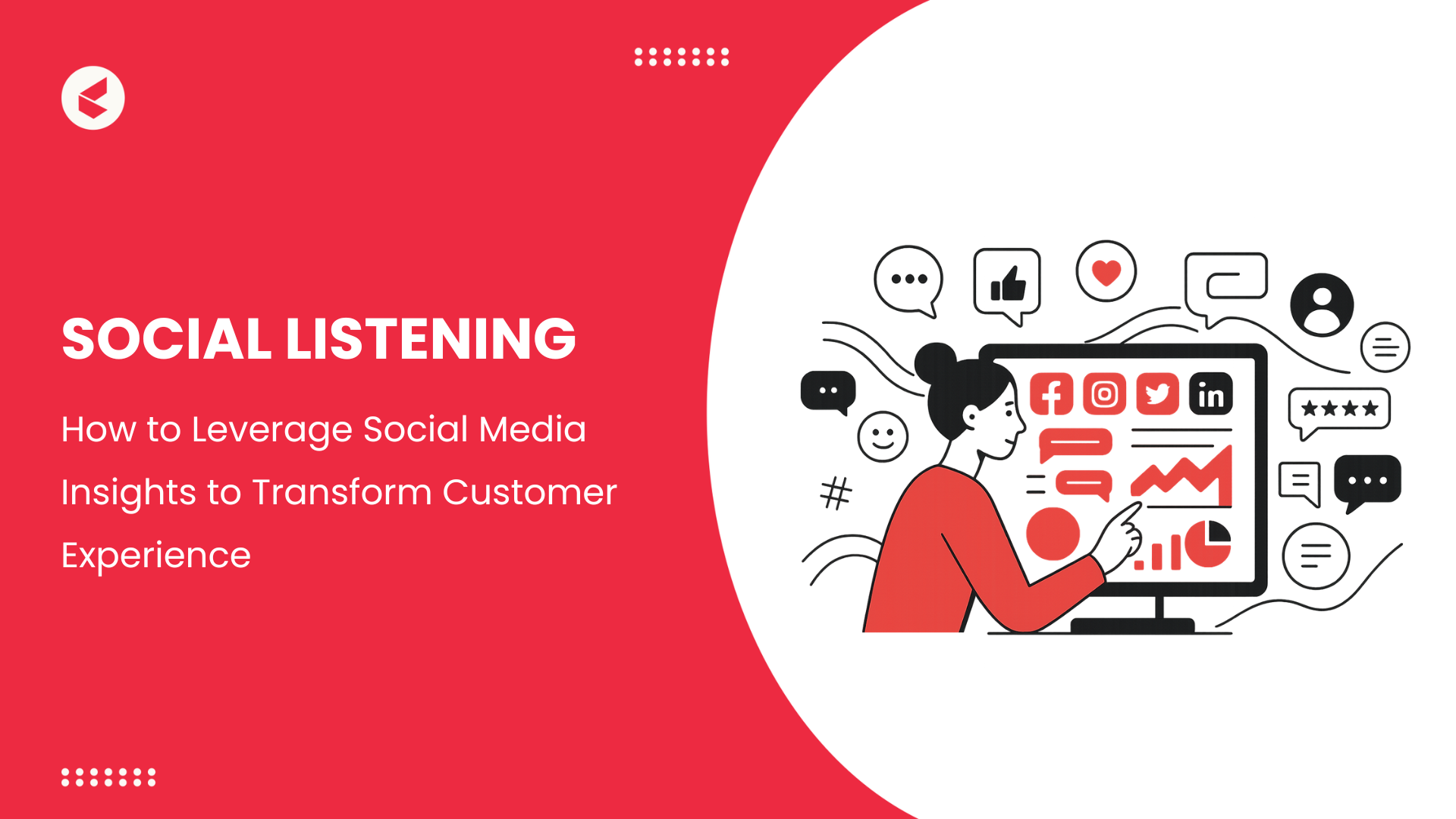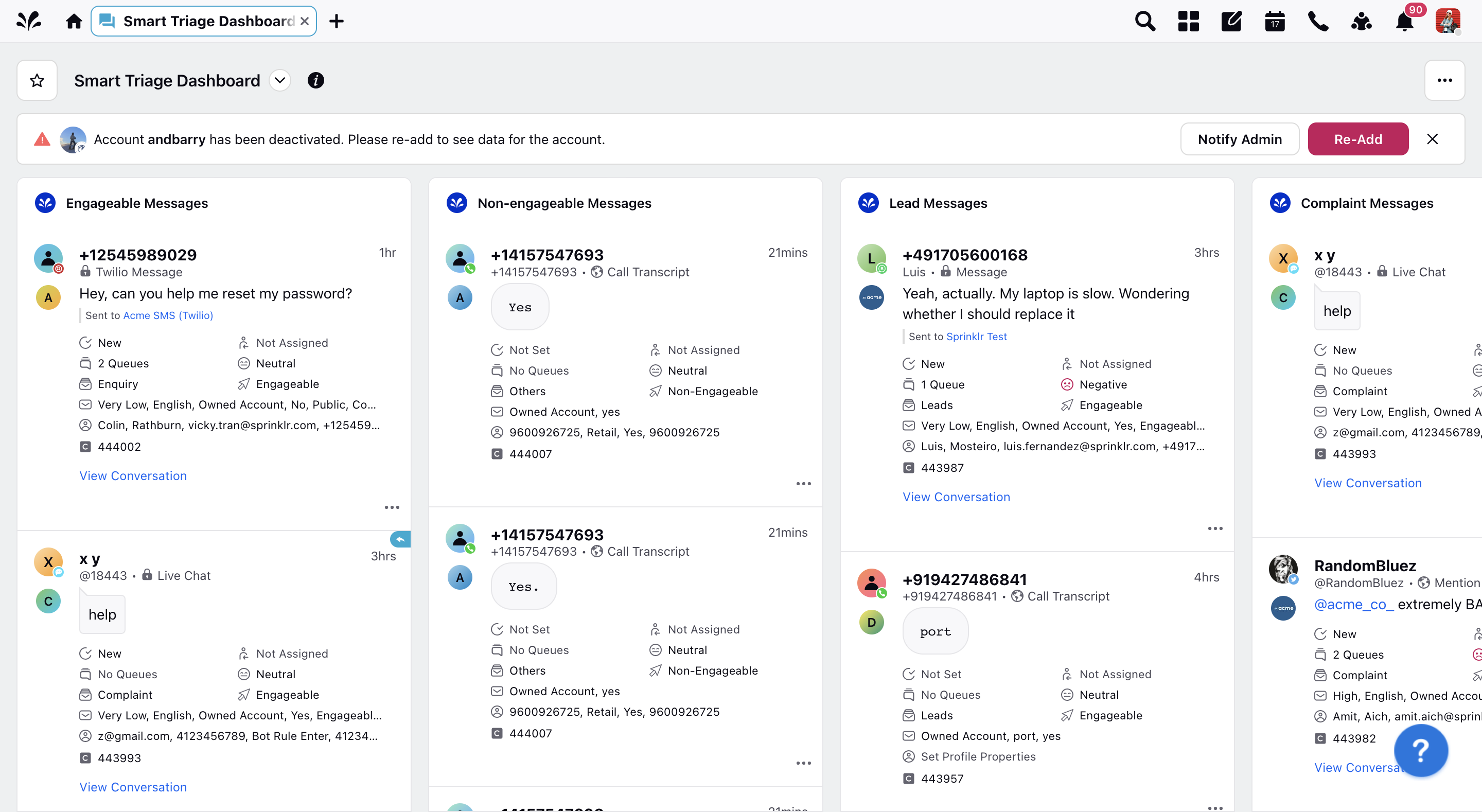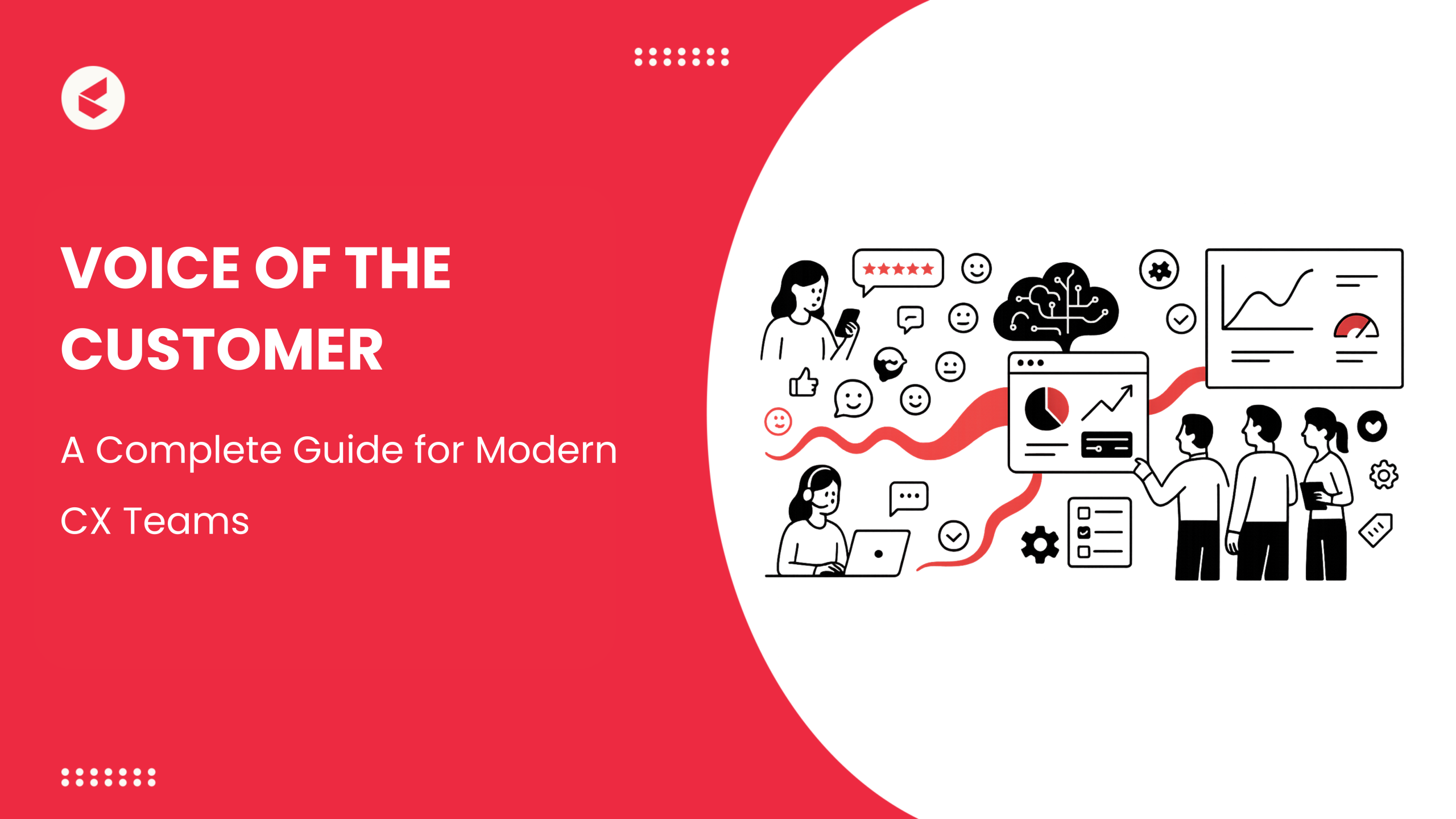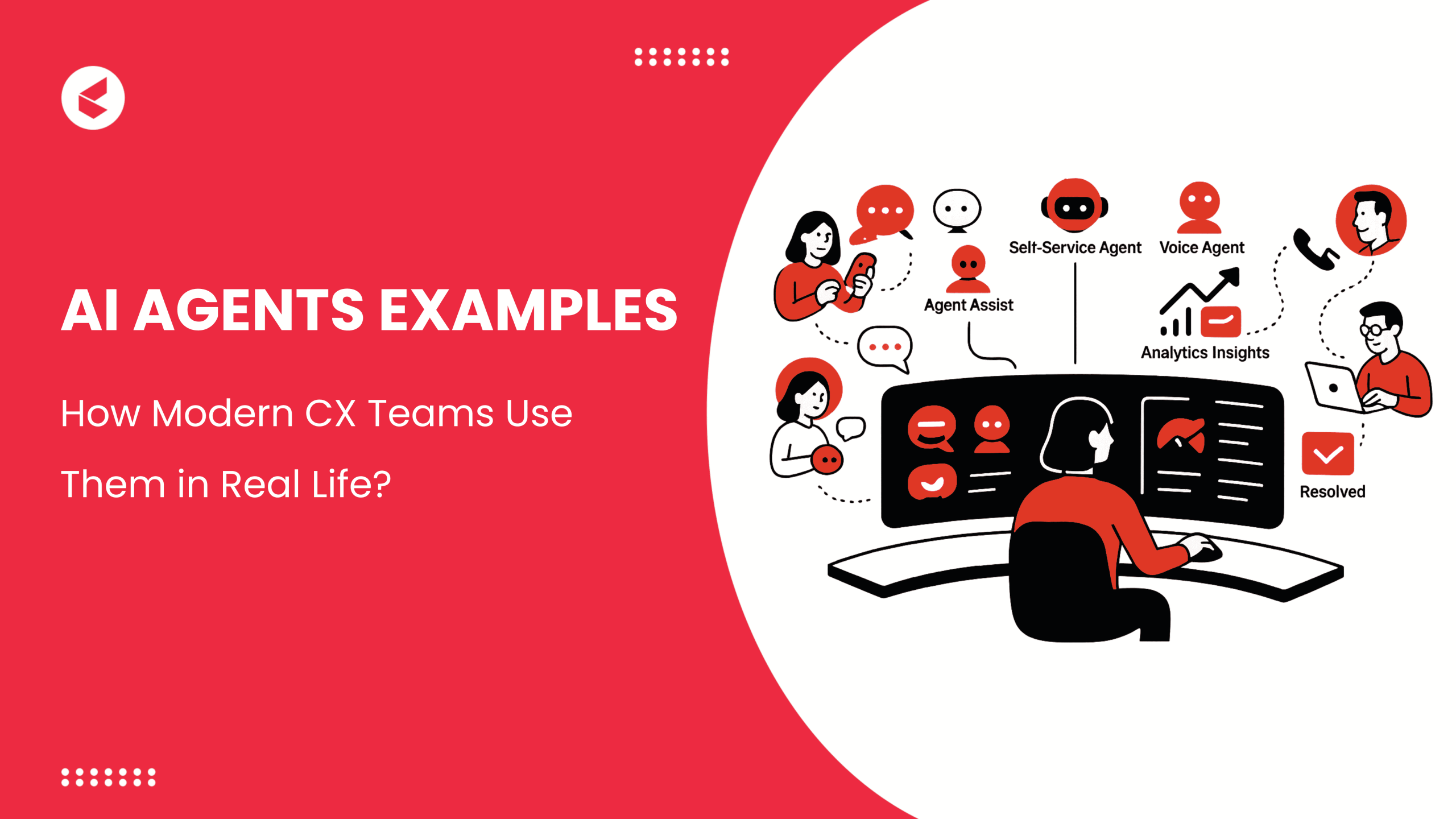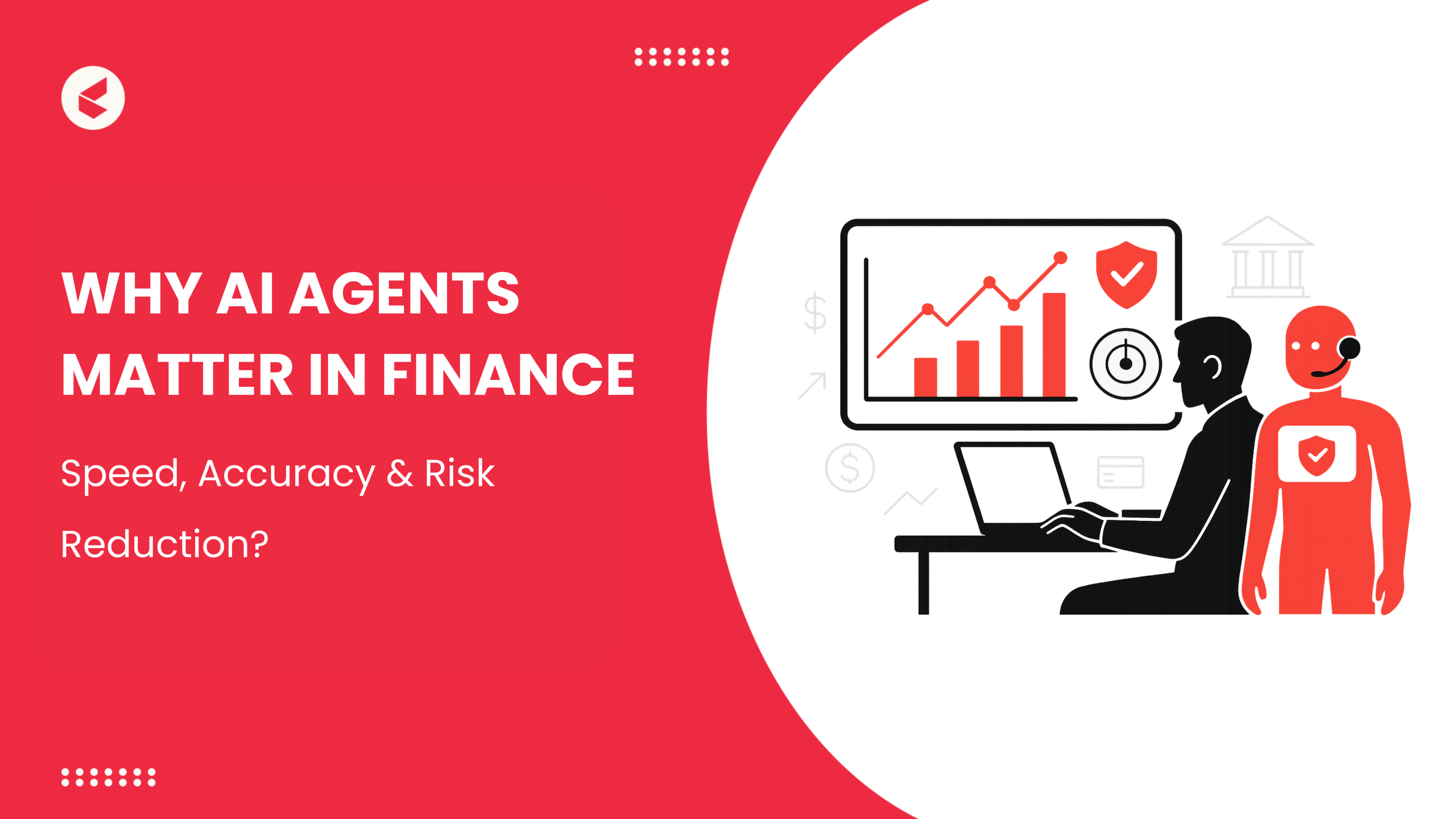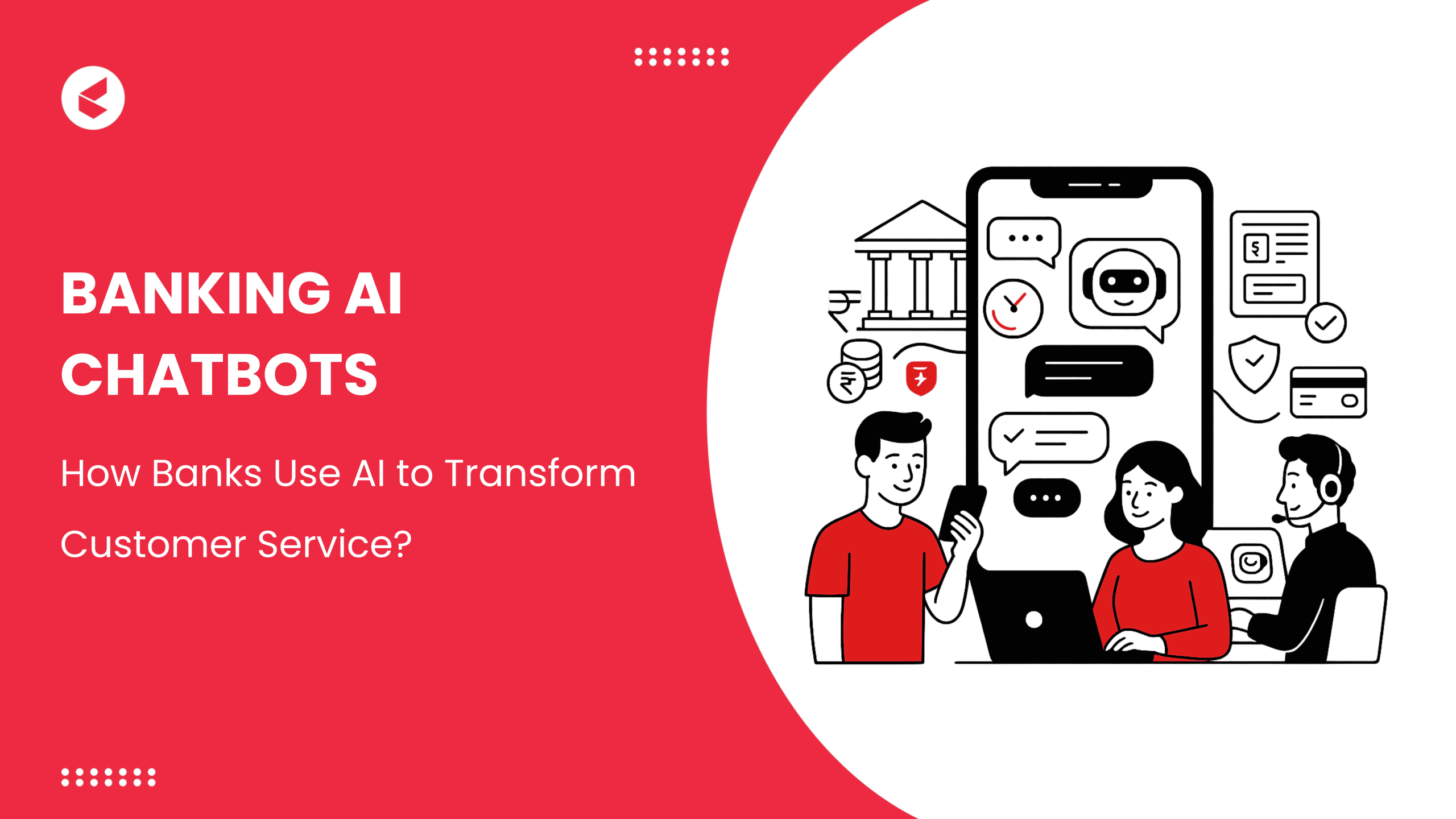Gone are the days when brands relied solely on surveys, focus groups, or call-center logs to understand what customers feel or expect. Today, customers don’t wait; they speak, vent, recommend, complain, and praise instantly on social media, forums, review sites, and other digital channels.
Brands that practice social listening aren’t just counting mentions. They’re trying to understand the story behind them. When done right, it pulls emotion, trends, and overlooked details out of thousands of casual comments spread across the web. Compared to basic monitoring, which just tracks who’s talking about you, listening captures the why behind those words.
A 2025 Brandwatch report found that 62% of businesses used social listening tools to keep track of brand discussions and customer sentiment. That number says a lot: the strongest customer experiences begin when companies pay attention to the conversations happening around them.
In this blog, we’ll walk through how social listening works and which tools help you get real results. You’ll find out how to apply those insights in your CX strategy, prevent common errors, and strengthen your team’s listening mindset.
Social Listening vs. Social Monitoring: How Each Shapes Modern CX Management
It’s not unusual for teams to confuse social monitoring with social listening, though each serves a distinct role.
- Monitoring captures what’s happening in the moment, tracking mentions, tags, and keywords as they appear
- Listening digs into the “why” behind those comments. It studies tone, context, and ongoing topics across conversations, including ones that don’t even mention the brand
The goal is to understand what customers feel and what trends might shape future experiences. The table below breaks down these differences and shows how both methods strengthen customer understanding.
| Feature | Social Monitoring | Social Listening |
| Scope | Mentions, tags, and keywords | Broader conversations, sentiment, and trends |
| Purpose | React and respond to specific events | Identify patterns and deeper insights |
| Time Horizon | Immediate and short-term | Continuous and strategic |
| CX Relevance | Resolve complaints, manage service queries | Discover pain points, predict needs, personalize experiences |
Monitoring allows teams to recognize issues such as delivery delays or negative reviews and respond quickly to protect trust. Listening provides a wider perspective by connecting thousands of interactions over time to reveal what drives customer satisfaction or frustration. Together, they form a complete CX loop.
Why Social Listening Matters for Customer Experience
Every day, customers share thoughts about the brands they use. Some post on social media, and others chat in forums or private groups. These small moments of feedback build the bigger picture of how a company is seen.
By listening across channels, teams can pick up on the patterns behind what customers say. They start to see what clicks, what causes problems, and what people hope to experience next.
1. Real-time Feedback that Prevents Escalation
Loyalty often weakens when customer concerns go unaddressed. Forrester’s Global Customer Experience Index 2025 reflects this reality, showing that 21% of brands saw their CX performance drop, while only 6% improved.
Social listening helps prevent that slide. It spots shifts in tone or a sudden spike in frustration, giving teams a chance to fix the issue before it escalates publicly.
2. Insights That Drive Product and Service Improvements
Reading what people actually say online often reveals what formal surveys don’t. It shows recurring problems in design, delivery, or communication. Acting on these patterns helps CX teams make practical changes that customers notice and appreciate.
3. Personalization and Targeted Engagement
When a brand understands how people feel, it can respond in a way that feels genuine. Social listening provides that context. Replies sound more natural, less scripted, and more aligned with what customers expect in the moment.
4. Reputation and Risk Management
A brand’s reputation can change overnight. A study shared during the 57th Hawaii International Conference on System Sciences observed spikes in certain topics or tone often show up before public opinion starts to turn. Responding when those first signs appear helps brands keep their reputation steady instead of having to fix it later.
Core Features of an Effective Social Listening Tool
The right social listening platform helps brands understand customer sentiment and the reasons behind it. With that knowledge, teams can fine-tune how they communicate, improve products, and strengthen service.
The following features define an effective solution –
1. Multi-Channel Coverage and Data Aggregation
A listening tool brings together customer input from social sites, review pages, and online communities. It compiles the data into a single view, enabling teams to see how sentiment moves across platforms. Looking at these voices together helps them understand the larger story behind customer opinions.
2. Keyword, Topic, and Query Flexibility
Strong platforms adapt as discussions shift. They allow teams to track product mentions, competitors, and hashtags while using filters or keyword combinations to narrow results. This flexibility helps teams find valuable insights within the constant flow of online chatter.
3. Sentiment and Emotion Analysis
Today’s listening systems use natural language processing (NLP) to understand tone, emotion, and intent within customer messages. They go beyond simple sentiment tags to capture the meaning and context behind each comment.
CX teams rely on this understanding to fine-tune communication and strengthen how customers experience the brand.
4. Alerts and Spike Detection
Real-time alerts keep teams aware of sudden changes in activity or mood. When mentions increase or negative sentiment rises, the system sends instant notifications. Quick detection allows teams to step in before small issues grow into bigger problems.
5. Dashboards, Analytics, and Reporting
A dashboard brings structure to raw listening data, turning it into clear charts and visuals. This helps teams follow trends in tone, activity, and customer reactions more easily. The reports also help compare performance and keep everyone aligned on results.
6. Influencer and Contributor Analysis
Some people shape brand perception more than others. Identifying the people driving conversations about your brand helps teams decide who to engage with, thank, or reassure to guide perception more effectively.
7. Integration and Workflow Automation
When insights from listening tools link directly with CRMs or support platforms, feedback turns into practical action. Mentions can be converted into tickets or tasks automatically, and updates move smoothly between teams. This level of automation turns insights into real action without slowing down daily workflows.
How Social Listening Enhances Customer Service
Social listening gives service teams a clearer view of what customers say online. It helps them find concerns or suggestions that might not appear in direct messages, allowing faster replies and better overall support.
Key ways it enhances service include –
- Many customers share opinions or complaints without tagging the brand. Listening tools catch those mentions early and notify teams so they can respond before issues grow
- By reviewing sentiment and conversation history, agents gain useful context before replying. This makes responses faster, more accurate, and better aligned with the customer’s tone
- When multiple customers mention the same concern, social listening highlights that trend. Teams can then focus on resolving the underlying problem rather than reacting case by case
- Handling conversations through social platforms often saves time for both sides. Customers feel supported when help reaches them on the same platforms they already use. That’s how trust grows: through small, visible moments where brands actually listen
How to Implement Social Listening in Your CX Strategy
Making social listening part of CX takes more than a plan. It needs time, communication, and teams willing to keep improving together. The process grows over time, shaped by how teams use insights, share context, and adjust what works. Here’s how to start putting that into motion.
1. Define Your Objectives
Begin with focus. Ask what outcomes matter most: early problem detection, product improvement, or stronger brand sentiment. Then identify how you’ll measure those results over time through CX data or feedback trends.
2. Identify Your Key Audiences and Channels
Find out where customers actually share their thoughts. It might be Reddit, X, or review platforms, depending on your audience. Put your effort into the spaces where engagement runs high and opinions spread quickly.
3. Build Targeted Listening Queries
List what you plan to track, including brand names, products, competitor mentions, and hashtags. Review this list regularly; the way people talk online changes faster than most teams expect.
4. Choose the Right Tool
Pick a listening tool that your team won’t struggle to learn. The best ones track sentiment, send alerts, and plug right into your CRM to keep work moving easily between departments.
5. Set Up Alerts and Dashboards
Once everything’s running, let alerts flag big jumps in mentions or mood. Dashboards keep it simple by surfacing what matters instead of making teams scroll through raw numbers.
6. Analyze and Prioritize Insights
Take time to read the data before acting. Focus first on insights that clearly affect satisfaction or loyalty. Sometimes, one small improvement does more good than a dozen surface-level changes.
7. Close the Feedback Loop
Turn insights into visible action. Let people know when their feedback turns into real updates. When you show customers that their words led to action, it builds trust. Internally, it reminds teams that progress is shared, not siloed.
8. Monitor Progress and Refine Continuously
Keep watching how your listening setup performs. Some weeks it will surface new issues; other times it will highlight quiet wins you didn’t expect. Tweak the filters, shift priorities, and keep learning from what the data says between the lines.
Top 5 Social Listening Tools for Customer Experience Teams
Tools don’t create empathy, but they make it scalable. The platforms listed next help CX teams turn raw social discussions into clear, useful guidance that improves both speed and quality of service.
1. Kapture CX
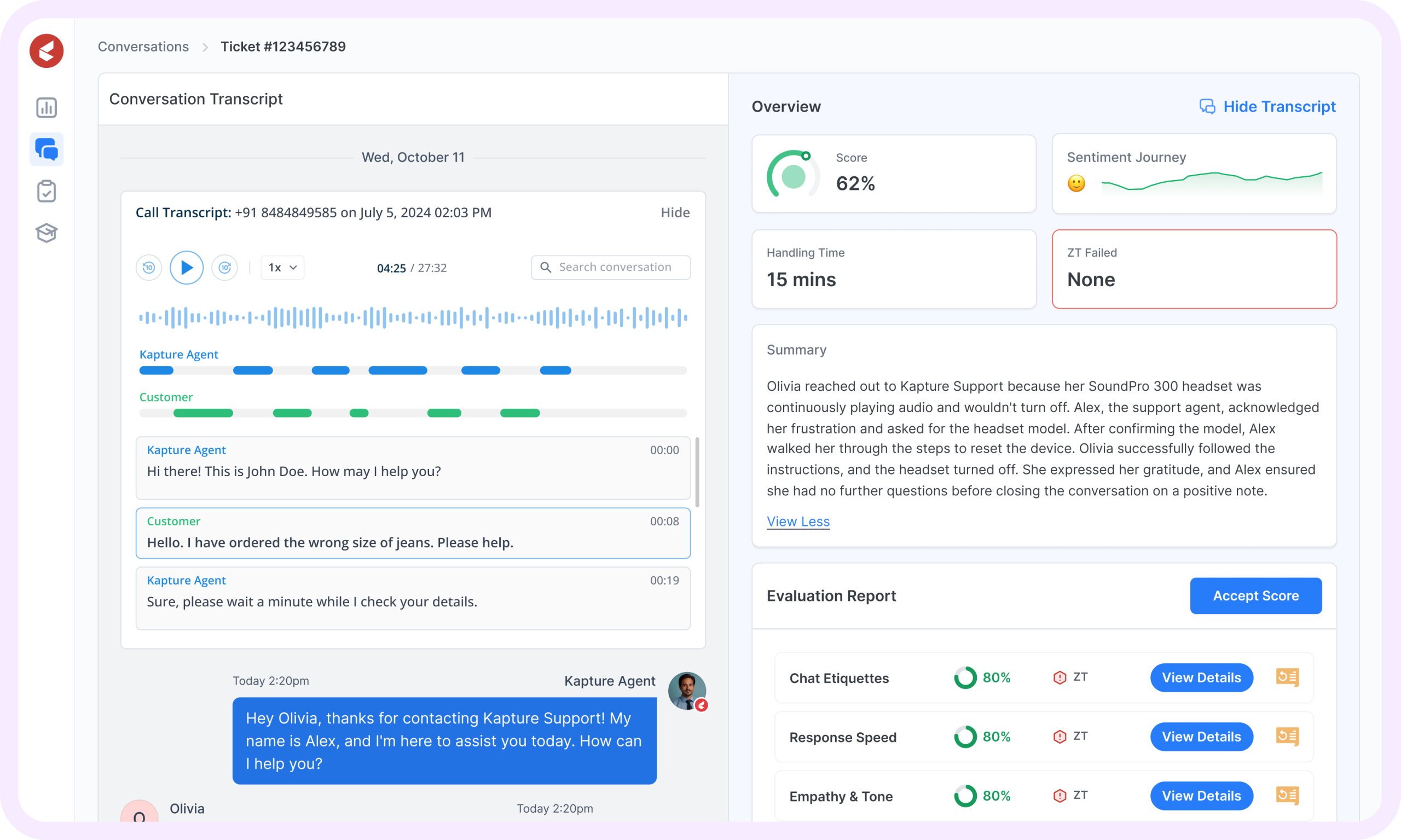
Kapture CX unites customer conversations across channels. From chats and social comments to calls and emails, everything appears in one place where teams can manage it easily.
The system learns from every interaction and supports faster responses. Automation and AI features make sure feedback leads to real action and smoother experiences.
Standout Features
- Omnichannel integration to connect social, chat, and email to maintain continuity across channels
- Conversation intelligence with sentiment, intent, and context parsing to tailor each response effectively
- Automatic ticket creation from tagged and untagged mentions for quick query resolution
- Live dashboards with real-time CX insights to monitor brand sentiment and response times
- Smart routing and workflow automation to reduce delays and enhance first-contact resolution
- CRM and customer data integration for personalized engagement to offer responses that feel human
CX Relevance
Kapture CX connects what customers say with how teams respond. When someone mentions a brand on social media, the system automatically creates a support ticket so the issue reaches the right people fast.
It helps reduce missed messages and keeps every touchpoint consistent and responsive.
G2 Rating – 4.6/5 (300+ reviews)
2. Brand24
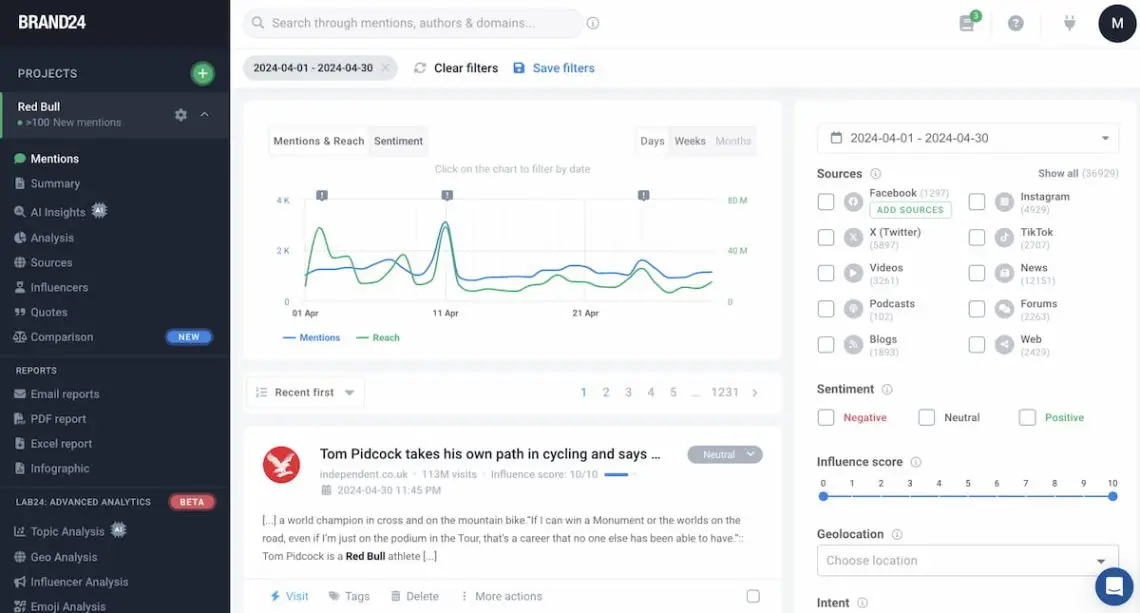
People talk about brands everywhere: on social feeds, blogs, and comment threads. Brand24 listens across those spaces so CX teams can see what’s catching attention and how the mood is changing.
It also highlights the people who influence that conversation, giving teams context they can actually use.
Standout Features
- Influence scoring that highlights key opinion leaders
- Smart alerts for spikes in mentions or sentiment changes
- Advanced keyword and Boolean filters for precision tracking
CX Relevance
Brand24 helps CX teams catch rising issues early. When a post or comment starts to gain visibility, the platform flags it so the right team can respond quickly. By managing those key moments well, brands keep control of the conversation and protect their reputation.
G2 Rating – 4.6/5 (200+ reviews)
3. Sprinklr
Sprinklr gives CX teams one place to manage listening, analytics, marketing, and customer care. The platform gathers information from digital sources across the web and uses AI to read the mood of conversations and track how audiences shift over time.
The platform’s size and connectivity make it a strong choice for enterprise operations.
Standout Features
- Monitoring across 30 or more social and web platforms
- Visual listening that identifies brand images and videos
- AI-powered analysis for sentiment and trend prediction
- Unified dashboards that connect insights across departments
CX Relevance
Sprinklr allows teams to see what customers are saying and act right away. It ties listening results to ongoing marketing and service work so messages stay clear and problems get fixed sooner.
G2 Rating – 4.2/5 (2,000+ reviews)
4. Mention
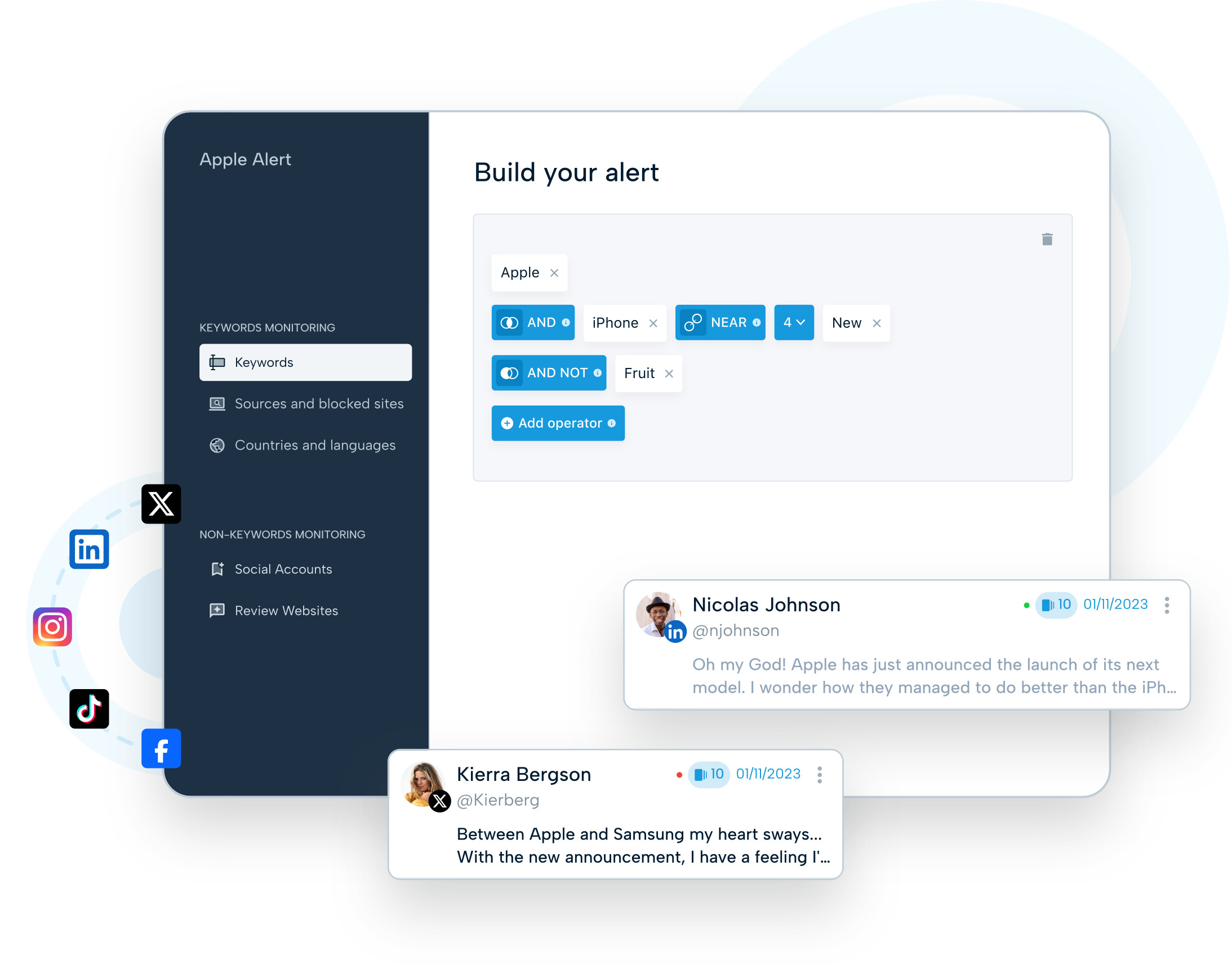
Mention offers an easy way for CX and marketing teams to track brand mentions, competitor activity, and industry sentiment. It brings listening, publishing, and response management into one workspace for better coordination.
Standout Features
- Shared inbox for direct responses to customer mentions
- Filters for region, language, and platform
- Historical tracking to identify long-term trends
CX Relevance
Mention helps teams respond to customers quickly and accurately. When teams manage replies from the same space, the voice stays uniform across conversations. Each message gets noticed, and no customer query is left hanging.
G2 Rating – 4.3/5 (400+ reviews)
5. Talkwalker
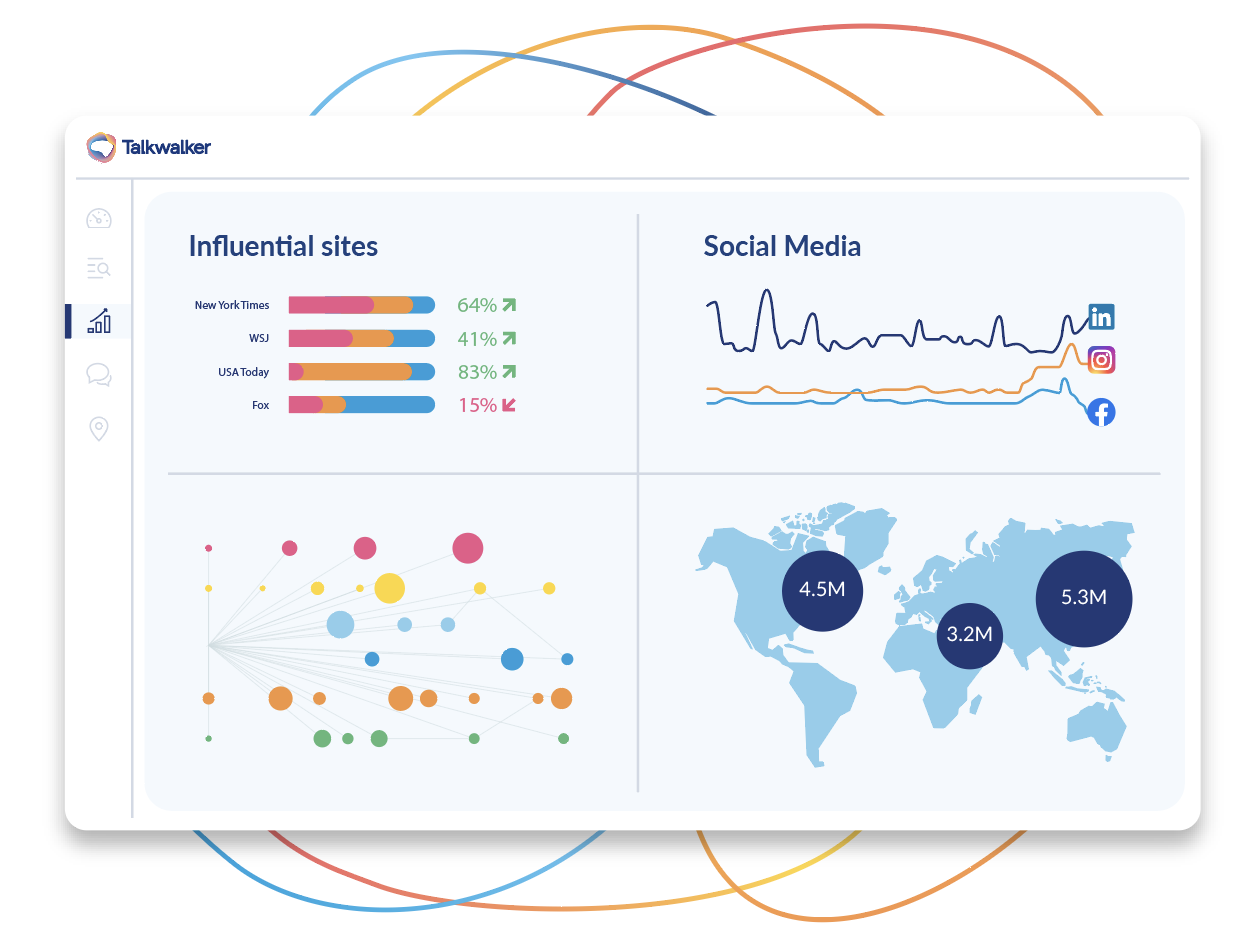
Talkwalker helps CX teams recognize signs of dissatisfaction early and step in before problems spread. Its visual and predictive tools reveal how people feel about a brand, allowing teams to adjust messages and tone with better awareness.
Standout Features
- Image and logo recognition for visual mentions
- Predictive analytics that identify trending topics early
- Historical data for long-term sentiment analysis
- Flexible query setup and detailed alerts
CX Relevance
Talkwalker enables CX teams to spot early warning signs of dissatisfaction and respond before issues grow. Its predictive and visual insights help brands understand how customers feel and refine their communication accordingly.
G2 Rating – 4.3/5 (100+ reviews)
Measuring the ROI of Social Listening for CX Success
Evaluating ROI from social listening means connecting what you spend to measurable results in customer experience. A clear framework helps teams prove value and make improvements over time.
1. Define Your Costs and Value
Start by mapping out total costs such as software, setup, staffing, and training. Then list measurable returns, including fewer escalations, lower service costs, better engagement, and stronger retention from quicker replies.
2. Choose Meaningful Metrics
Focus on metrics that reflect your customer experience priorities. Some good examples include –
- Average time to resolve issues identified through social listening
- Decrease in recurring complaints or unresolved queries
- Improvement in sentiment over a defined period
- Conversions or leads traced back to social media listening insights
- Reduction in cost per interaction or overall service costs
3. Use a Formula to Quantify ROI
Calculate ROI with:
| ROI = (Value Generated − Cost) ÷ Cost × 100 |
Tally direct gains such as incremental revenue. Add indirect effects such as lower churn or avoided crisis spending. The combination is what reflects true impact.
4. Use Case Studies and Benchmarks for Context
Draw comparisons from industry benchmarks or internal case studies. Research from sources like Mentionlytics shows that organizations using structured listening processes see measurable gains in service quality and operational efficiency.
5. Track Over Time and Refine
Keep checking how your listening efforts perform over time. Seeing what changes from one review to the next helps you notice trends, tidy up your process, and make sure the insights you collect actually improve customer experience.
Common Mistakes to Avoid in Social Listening
Even small habits can weaken a listening setup. These are a few to watch for early:
- Watching only direct mentions misses the deeper context. Look at how people talk about your space, not just your name
- Using one or two hashtags or keywords narrows your reach. Add slang, product nicknames, and industry phrases to catch hidden trends
- Avoid brushing off negative posts. They’re often the first signs of issues worth fixing and a chance to show accountability
- If insights stay within one department, progress stalls. Share results across teams to connect decisions and outcomes
- Automation helps, but it isn’t everything. A quick human check ensures sentiment and tone are understood the right way
Emerging Trends in Social Listening for CX Teams
Social listening keeps evolving as teams push for better accuracy in reading customer sentiment. The following developments highlight how both technology and CX strategy are changing to meet that goal.
1. Market Growth Fuels Adoption
According to Mordor Intelligence, the social media listening market could grow from $9.62 billion in 2025 to $18.43 billion by 2030. This rise points to how seriously brands are now taking customer conversation data as a source of real business insight.
2. Rising Investment in Advanced Analytics Tools
According to Global Market Insights, the social listening solutions market was worth about $7.6 billion in 2023. It’s expected to expand by more than 10% each year through 2032 as more companies turn to predictive analytics, AI sentiment tracking, and image recognition to understand what shapes customer opinions.
3. Enterprise-Level Expansion and Integration
The Social Intelligence Lab found that 39% of organizations spent more than $100,000 on social intelligence tools in 2023, up from 33% in 2022. It’s a clear sign that social listening is now treated as core business infrastructure within CX.
4. Listening Beyond Public Platforms
Customer conversations are spreading into private networks and small communities. Tools are adapting by covering these spaces too, giving CX teams access to more authentic feedback from audiences that may not post publicly.
Turning Social Listening Insights into Better Customer Experiences
Adding social listening to a customer experience plan gives context to what customers are already sharing. It turns their words into insights that influence decisions, improve support, and make communication more personal. Acting on this information shows people their opinions matter and helps build long-term trust.
Kapture CX supports this approach by connectingsocial listening with unified support and analytics tools. It helps teams track sentiment, manage conversations, and respond quickly across multiple channels.
Book a personalized demo to explore how Kapture CX turns social listening insights into actions that strengthen every customer interaction.
FAQs
It gives CX teams a clear view of what customers experience at every stage. Looking at how people talk online helps pinpoint the moments that build loyalty or cause frustration.
Yes. The insights show what people value, which helps teams craft messages and offers that feel relevant rather than generic.
Comments and discussions often highlight missing features or pain points. When product teams analyze those patterns, they can make targeted updates that reflect what customers want most.
Teams that monitor online conversations can notice when certain topics start gaining attention. Tracking these gradual shifts in tone and activity helps brands understand what’s coming next and adjust their plans early.
Retail and technology teams have been using social listening the longest. Today, healthcare, education, and travel companies rely on it just as much to understand what people say about their services and to respond in more thoughtful ways.
